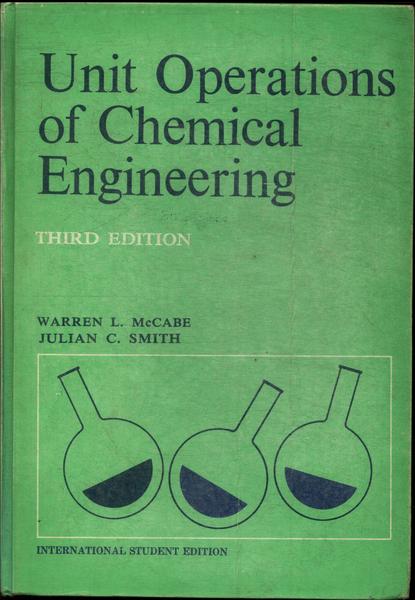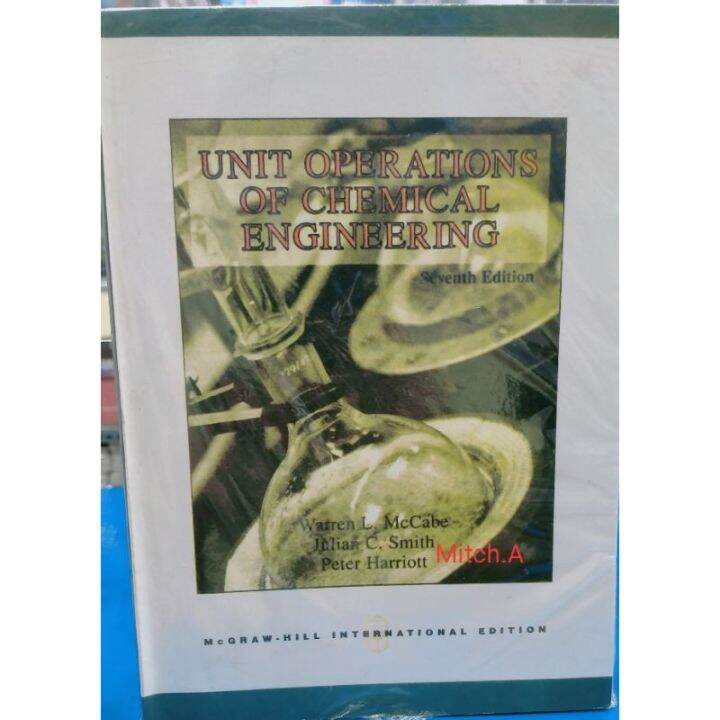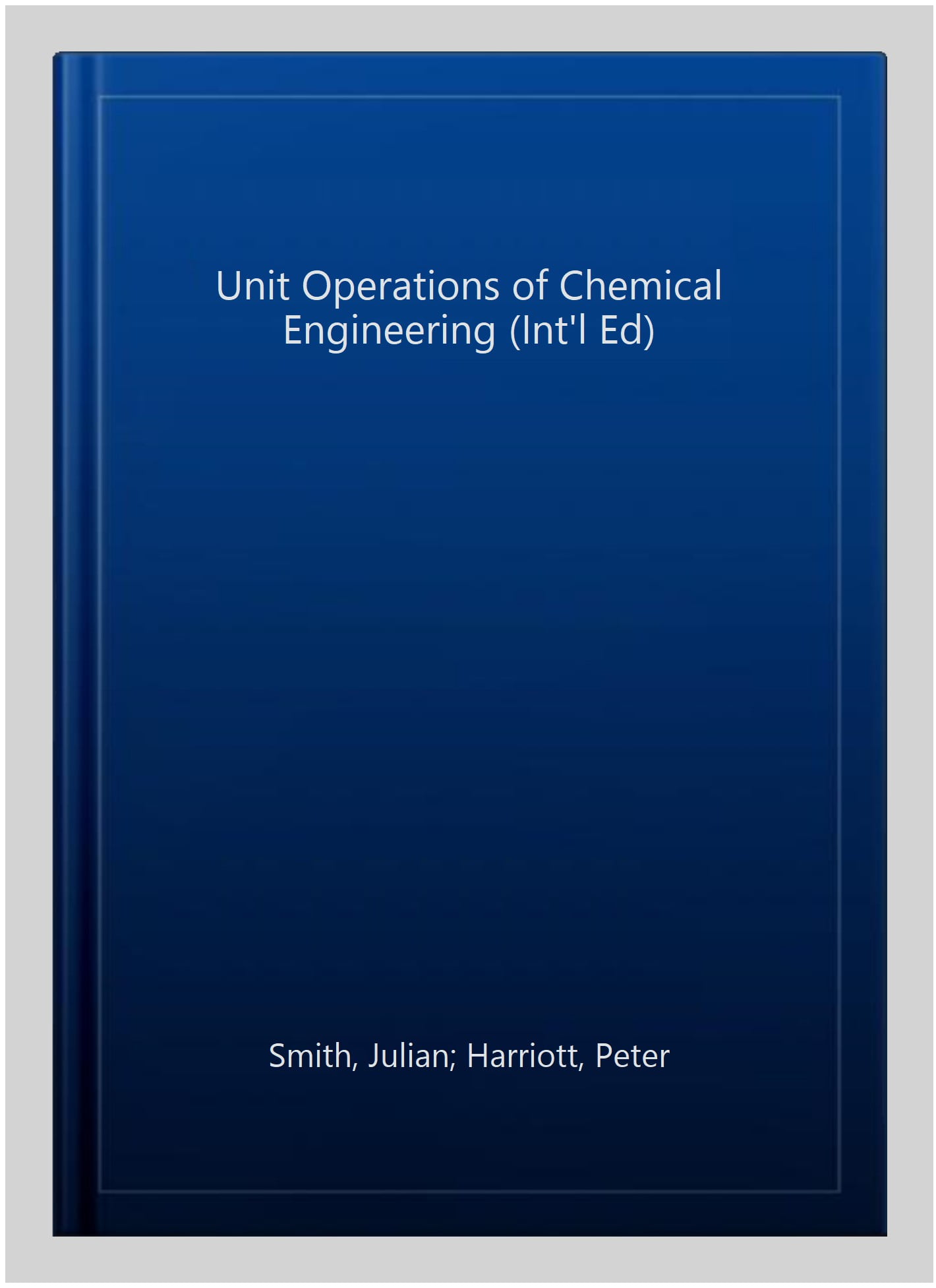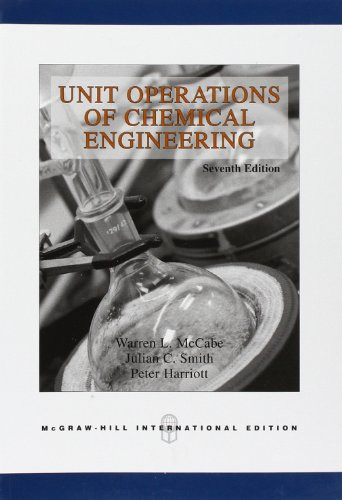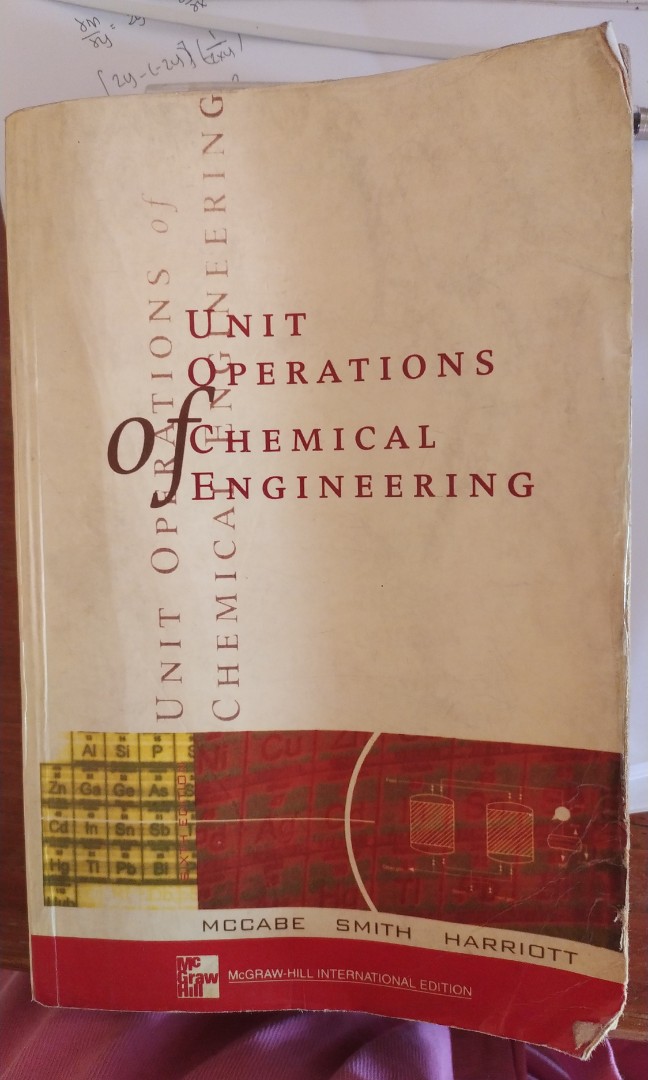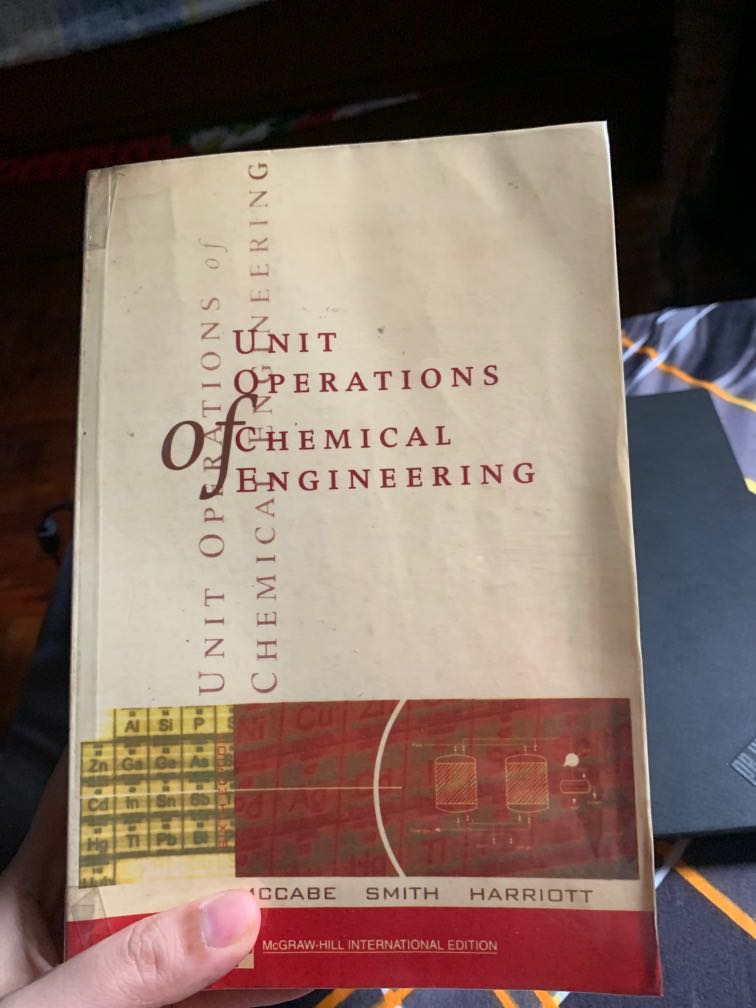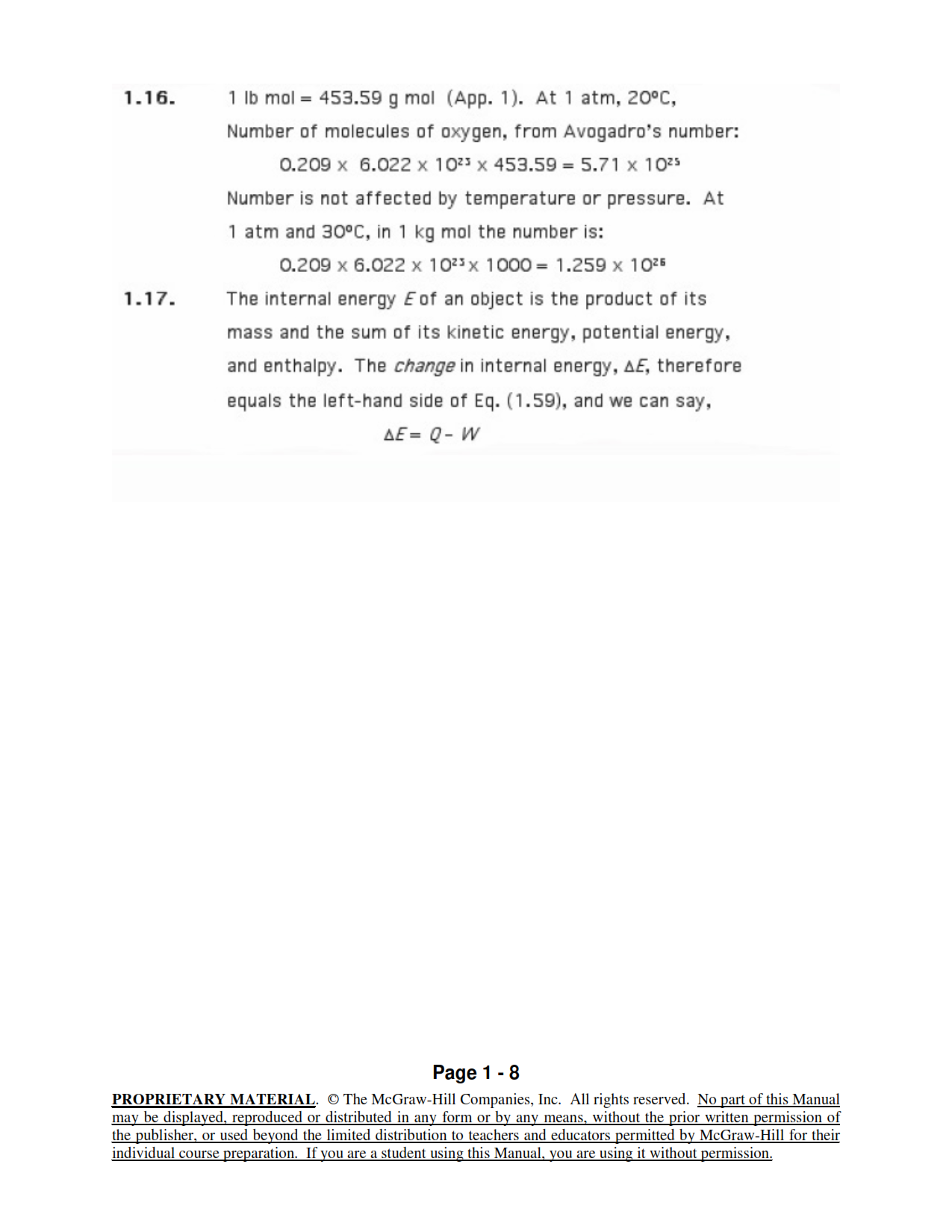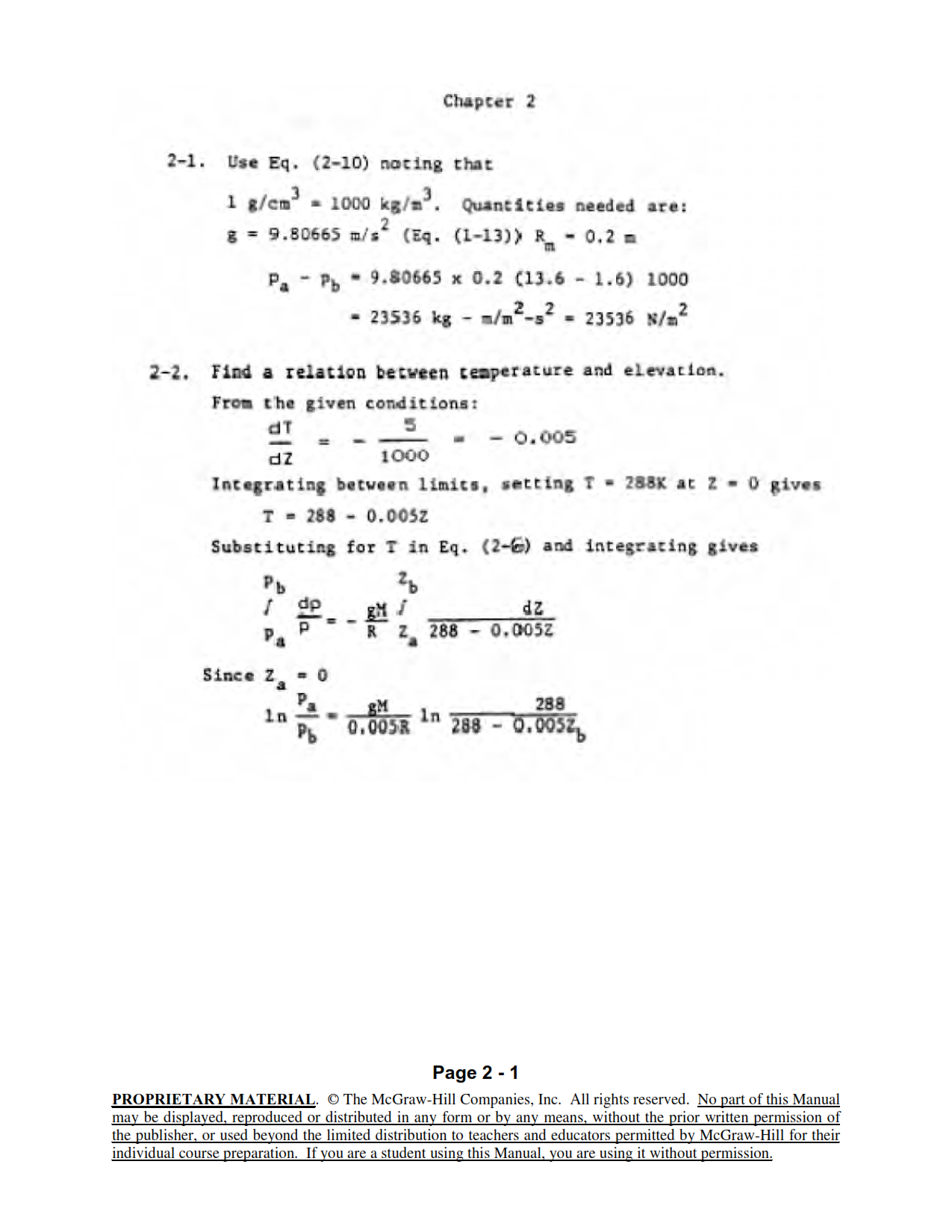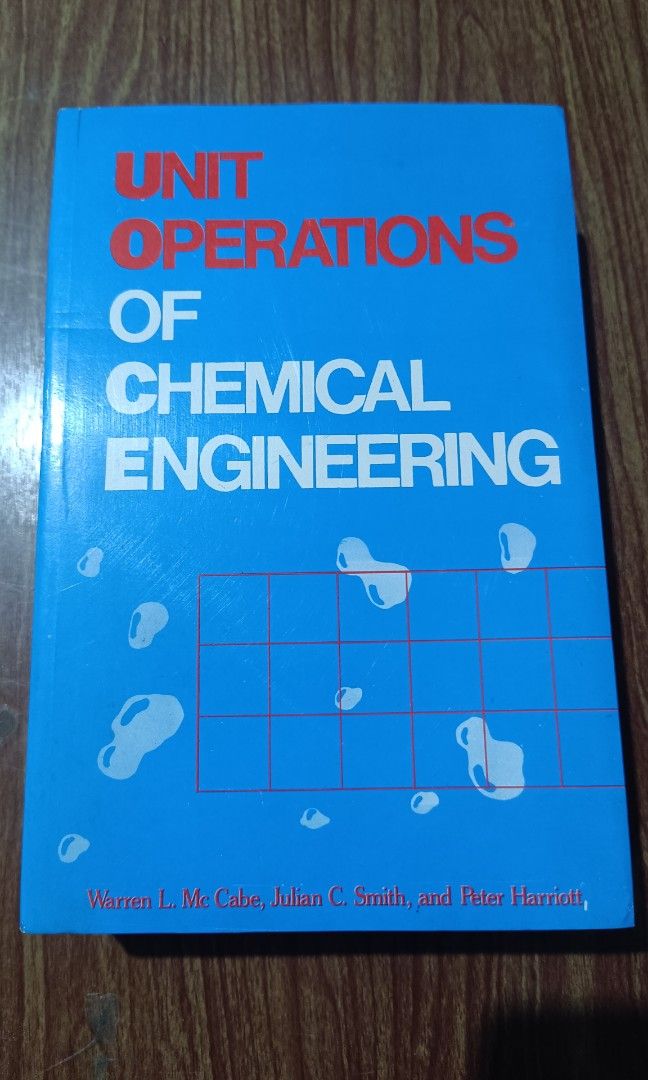Mccabe And Smith Unit Operations 6th Edition
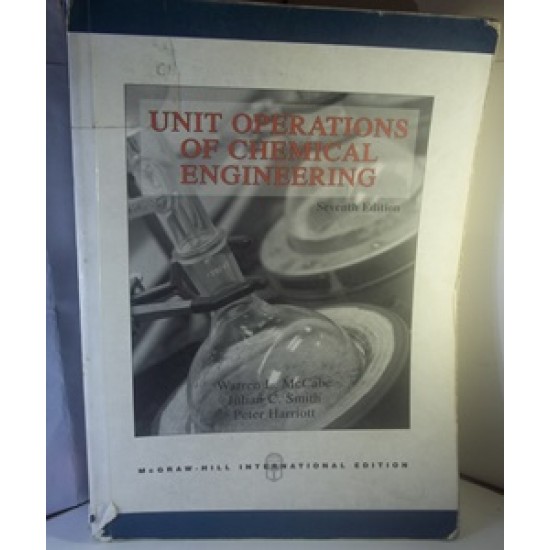
For generations of chemical engineers, one textbook has stood as a cornerstone, a veritable bible guiding them through the intricacies of industrial processes. That text is McCabe and Smith's Unit Operations of Chemical Engineering. Now in its 6th edition, the book continues to evolve, but recent discussions surrounding its accessibility, applicability to modern challenges, and the balance between fundamental principles and emerging technologies have sparked debate within the academic and professional communities.
The 6th edition of Unit Operations of Chemical Engineering, often referred to simply as "McCabe and Smith," remains a foundational text for understanding the physical principles behind chemical engineering processes. This edition, co-authored by Peter Harriott, maintains its focus on core concepts like fluid mechanics, heat transfer, mass transfer, and separation processes. However, critics question whether the updated content sufficiently addresses contemporary needs such as sustainable engineering practices, process intensification, and advanced modeling techniques, potentially leaving a gap in the preparedness of future engineers.
Historical Significance and Core Content
First published in 1956, McCabe and Smith quickly became a standard in chemical engineering education. Its longevity is attributed to its clear explanations, comprehensive coverage of fundamental principles, and numerous practical examples.
The text meticulously covers topics like distillation, absorption, extraction, drying, and evaporation, providing a solid base for understanding a wide range of industrial operations.
Each chapter typically includes detailed theoretical explanations, solved problems, and exercises designed to reinforce key concepts.
Updates in the 6th Edition
The 6th edition aimed to modernize the content by incorporating new examples, updated data, and expanded coverage of certain topics. Specifically, sections on membrane separations and adsorption were revised to reflect advancements in these technologies.
Furthermore, the book includes more computational examples, encouraging students to utilize software tools for process simulation and analysis. These additions sought to bridge the gap between theoretical knowledge and practical application.
However, some argue that these additions are incremental and do not fundamentally alter the book's core structure or address the evolving landscape of chemical engineering.
Criticisms and Alternative Perspectives
Despite its widespread use, the 6th edition of McCabe and Smith has faced criticism regarding its relevance in the 21st century. Some academics argue that the book places too much emphasis on traditional unit operations at the expense of newer, more sustainable technologies.
“While the fundamentals remain critical, our students need to be equally well-versed in areas like process intensification, renewable energy, and advanced materials,” says Dr. Emily Carter, a professor of chemical engineering at Stanford University.
She adds that textbooks should reflect the evolving priorities of the industry.
Another point of contention is the book's complexity and perceived lack of accessibility for some students. The mathematical rigor and dense prose can be daunting, especially for students with varying backgrounds.
Alternative textbooks and online resources are emerging, offering more visual and interactive learning experiences. These resources often incorporate real-world case studies and simulations to enhance understanding.
However, proponents of McCabe and Smith argue that its depth and rigor are essential for developing a strong foundation in chemical engineering principles.
Impact on the Chemical Engineering Profession
The widespread adoption of McCabe and Smith has undoubtedly shaped the chemical engineering profession. Many practicing engineers credit the book with providing them with the fundamental knowledge necessary to succeed in their careers.
Its influence is evident in the curriculum of numerous universities worldwide. It is seen in the standardization of unit operations terminology and concepts.
However, the debate over its relevance raises questions about how to best prepare future engineers for the challenges of a rapidly changing world.
Future of Chemical Engineering Education
The ongoing discussion surrounding McCabe and Smith highlights the need for continuous evaluation and adaptation in chemical engineering education. Incorporating emerging technologies, sustainable practices, and accessible learning methods is crucial for preparing students for the future.
While foundational texts like McCabe and Smith will likely remain relevant, educators must supplement them with resources that address contemporary challenges and promote innovation. The industry calls for graduates proficient in both the fundamentals and the latest technologies.
The evolution of chemical engineering education hinges on finding the right balance between tradition and innovation, ensuring that future engineers are equipped to tackle the complex problems of the 21st century.
